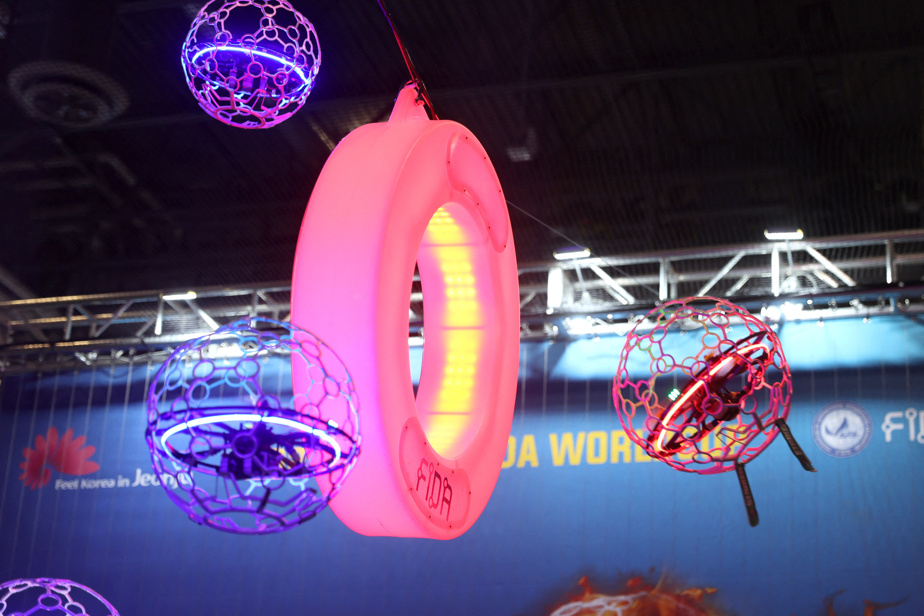(Las Vegas) A loud whirring sound suddenly rises, as if a gigantic swarm of insects had invaded Eureka Park, one of the many venues of the Las Vegas Consumer Electronics Show (CES). It is actually a game of “drone soccer”, or football, with drones born in South Korea.
Five red drones confront five blue drones, all piloted with remote controls by players stationed outside the fenced playing field, to prevent a drone in distress from hurting anyone.
It’s three minutes of play. Everything goes very quickly. The drones – protected in honeycomb balls 40 cm in diameter – take off, twirl, collide, bounce on the sides and on the ground covered with a soft green covering.
Like in football, the objective is to score a goal.
“Three defending drones remain in front of the goal”, a white ring 60 centimeters in diameter – nicknamed donut – located 3.5 meters high, Sean Greenhalgh, 32-year-old professional “drone soccer” player, explains to AFP. To score, the drone must cross the donut.
A former employee of the American supermarket chain Trader Joe’s, he discovered this discipline during drone photography training. It was barely a year ago.
He is now the captain and main striker of the American “drone soccer” team, and teaches it to children aged four and up. And he seems to live quite comfortably from his new passion.
“The game was created by an engineer who was inspired by Harry Potter”, where wizards are passionate about quidditch (a kind of flying football), explains Jasmine Lee, commentator of the match.
“It’s very difficult to score. Keeping the drone in a stationary position requires a lot of experience,” she told AFP.
The inventor of the game worked for the South Korean technology institute Camtic, which still remains involved in the discipline since its boss is also the president of the International Federation of “Drone Soccer” (Fida).
Since its creation in 2016, the discipline has conquered twenty countries but South Korea remains by far the most fervent with more than 2000 teams. In the United States, there are only three but more than 5,000 young people have been trained, according to Mr. Greenhalgh.
“They learn everything from A to Z, including how to maintain the device,” smaller for learning.
The first professional league was created in 2023 and the first World Cup is planned for South Korea in 2025, says Ro Sang Heub, CEO of Camtic and president of Fida.
A world championship is scheduled for May 2025 and the World Cup for the following October.
His hope? Let “drone soccer” be completely inclusive. His dream ? “FIFA attracts three billion people, I dream that it will be the same for drone soccer,” he confides, also thinking of the Olympic Games.
In the background, the exhibition match continues. The reds lead: 6-4. Everything is happening very quickly.
Only the main attacker can score and, with each goal, the donut passed by the drone turns red for a few seconds, the scorer must return to his own donut before starting the attack again, helped by his assistant.
If he has to retire due to a technical problem, his assistant takes over as scorer, explains Sean Greenhalgh, one of twenty-five American professional players.
Fida has established very specific rules such as the weight of the drones which is checked before each game and limited to 1.2 kilos, battery included.
In competition, a match is made up of three rounds of three minutes each interspersed with five-minute breaks to make possible repairs and refine some adjustments.
In the end, the two teams finished tied, 11-11. In thirty minutes, the players return for a new demonstration in front of many curious people.
